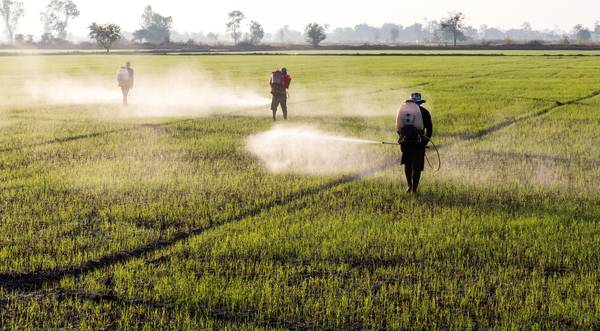In 2018, domestic
pesticide industry will surely continue being impacted by policies and the
market situation in 2017. According to CCM, in 2018, there are five main points
that domestic pesticide industry should pay attention to.

First
of all, spot checks on the quality of agricultural products will continue being
carried out in China in 2018. Also, special inspections will be conducted among
pesticide producers and retailers. In addition, authorities will continue to
organise the Production Safety Inspection Campaign in order to avoid
significant production accidents.
Companies
should strengthen the supervision and management of the quality of pesticides.
This includes to advance the establishment of pesticide traceability system,
continue strictly follow the policy of designated retail of pesticides
restricted for use, and enhance pesticide risk evaluation, conducting
reassessment over the safety of pesticides that have been used for more than 15
years.
According
to officials, about a thousand trace standards of pesticides are to be
formulated or revised. Meanwhile, companies might revoke the outdated standards
which cannot fit in with the green development strategy; formulate or revise
national or industrial standards regarding pesticide residue, technical
specification, a rating of products, as well as utilisation of wastes. In
addition, according to the Ministry of Agriculture of the People's Republic of
China, the Regulations on the Prevention and Control of Crop Pests &
Diseases is being underway, and the law is to be launched with the formulation
of its supporting rules starting as soon as possible.
What’s
more, the planting structure of major crops is to be adjusted in China in 2018.
According to the Ministry of Agriculture, the planting area of rice is to be
reduced. This aims to achieve the goal that over 0.67 million ha can be reduced
in 2018. The planting area of corn will also be reduced. As for wheat, the area
will be greatly reduced in the over-development areas of groundwater in North
China and Tarim River Basin; reduced in Northwest China where stripe rust
usually originates from and in Jianghuai region where head blight easily
occurs. In addition, more emphasis will be put on developing featured crops
such as traditional Chinese medicinal materials, edible fungus, tea, fruits and
food grains other than wheat and rice. Last but not least, promote the
development of potato as a kind of staple food. By the year of 2020, the
proportion of potatoes as the staple food in its total consumption is expected
to increase to over 30%.
Finally,
the Zero Growth of Pesticide Usage Campaign will continue being carried out in
China in 2018. This leads to the reduction of pesticide usage with green
prevention and control methods. The government, therefore, is going to
build some demonstration bases for the combination
of united prevention and control and green prevention and control of
pests and diseases, for the combination of honeybee pollination and green
prevention and control technologies.
All in
all, China’s pesticides market will continue growing in 2018, driven by updated
processing technology and market consolidation. Large enterprises will profit
the most in 2018 and more pesticides are getting banned. Foreign traders of
Chinese pesticides will face good opportunities to bring the products under
trusted brand names to international markets and benefit from the growing
demand worldwide.
Leading
enterprises in this industry are going to have more power in the market as
environmental inspections and safety inspections become a normal routine in the
foreseeable future. The main advantages of large pesticides enterprises are the
self-sufficiency in raw materials and the resulting independence of market
voluntarily, the implementation of new national standards for pesticides to
fight fake and counterfeit products, as well as big overseas markets with
growing demand and already existing clients.
About the article
The information
for this article comes from CCM, China’s leading market intelligence provider
for the fields of agriculture, chemicals, food and feed.
Get regular
exclusive insights in China’s agrochemicals market by subscribing to our monthly
newsletters. Try out our Online Database for free with access to all of CCM’s
research resources of China’s agrochemicals market.
Join the
discussion by coming to our LinkedIn group and Facebook group.
Follow us
on Twitter: @CCM_Kcomber